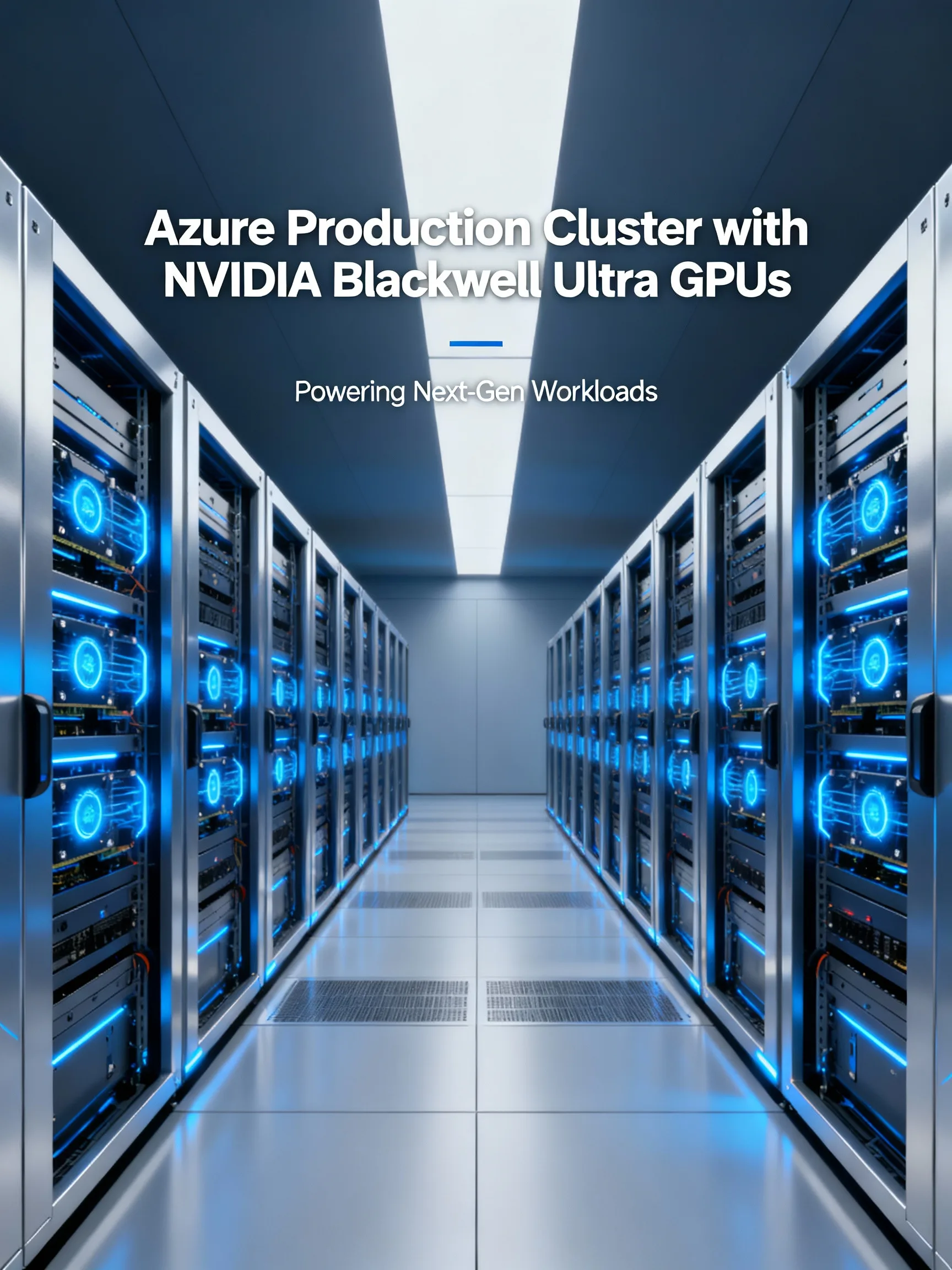
Introduction
The Azure production cluster with NVIDIA Blackwell Ultra GPUs is becoming a go-to architecture for demanding AI workloads, from LLM inference to multi-node training. This article explains practical design choices, deployment steps, and optimization strategies to run reliable, cost-effective production clusters on Azure that leverage Blackwell Ultra performance.
Why choose Azure and NVIDIA Blackwell Ultra GPUs
Azure offers a global footprint, managed Kubernetes (AKS), and deep integration with enterprise identity and networking that simplify production deployments. The NVIDIA Blackwell Ultra GPUs add a generational leap in raw tensor performance and memory bandwidth, which translates into higher throughput and lower latency for both training and inference. For example, large language model inference commonly benefits from larger on-GPU memory and faster attention kernels, reducing per-token cost and enabling larger batch sizes without memory swapping.
Choosing the Azure production cluster with NVIDIA Blackwell Ultra GPUs means combining Azure features like availability zones, private networking, and Azure Blob/NetApp files with Blackwell Ultra capabilities for predictable, scalable AI services.
Planning your Azure production cluster
Start with workload characterization. Identify whether your primary load is training, single-node inference, or distributed inference. Key inputs are model size (parameters), memory footprint per replica, peak throughput targets (tokens/sec or images/sec), and SLOs (latency percentiles).
Next, map these requirements to node sizing and count. For many inference workloads, you can use fewer, high-memory Blackwell Ultra GPUs to host larger partitions of a model and avoid sharding overhead. For training, plan for interconnect topology and network throughput: use Azure VNETs with accelerated networking and consider placement groups or availability zones to reduce cross-node variability.
Also plan storage and data flow. Use Azure Blob Storage for cold model artifacts and Azure NetApp Files or Premium SSDs for hot data. Estimate egress and IOPS based on pipeline needs. Finally, draft a cost and scaling strategy: reserve capacity for baseline demand and use autoscale for bursts. Tag resources for chargeback and monitor spend centrally.
Deploying and configuring the cluster
Common deployment patterns use AKS with GPU node pools or VM Scale Sets for fine-grained control. Steps typically include provisioning a GPU-enabled node pool, installing NVIDIA drivers and the NVIDIA Container Toolkit, and validating with standard images from NVIDIA NGC or Azure Marketplace that include CUDA and cuDNN.
Practical checklist:
- Enable accelerated networking and SR-IOV where available to minimize network jitter.
- Deploy a node pool dedicated to Blackwell Ultra GPUs and use taints/tolerations to schedule GPU workloads only on appropriate nodes.
- Install NVIDIA drivers and the container runtime via DaemonSet or use Azure’s preconfigured GPU images to reduce setup time.
- Use container images built for Blackwell architectures when available, and validate CUDA and library compatibility during staging.
For multi-node training, use NCCL-aware communication and enable topology-aware placement to improve all-reduce performance. For inference, consider colocating model-serving containers with an L7 load balancer at the edge and using horizontal pod autoscaling based on custom metrics such as GPU utilization or request latency.
Optimizing performance and cost
Once running, focus on observability and incremental tuning. Instrument both system-level metrics (GPU utilization, memory use, PCIe/NVLink bandwidth) and application-level metrics (latency P50/P95, throughput, batch sizes). Use Azure Monitor, Prometheus, and NVIDIA DCGM exporter to collect telemetry.
Optimization techniques:
- Right-size batch parameters to balance latency and throughput. Larger batches improve throughput but can increase p95 latency.
- Use mixed precision and kernel optimizations supported by Blackwell Ultra to reduce memory footprint and increase arithmetic throughput.
- Pin critical processes and isolate nodes for latency-sensitive inference to avoid noisy neighbor effects.
- Leverage model sharding strategies: tensor parallelism for training and pipeline parallelism for very large models when single-GPU memory cannot hold a replica.
Cost controls are equally important. Implement autoscaling policies tied to business metrics, use Azure Reserved Instances or Savings Plans for predictable baseline usage, and expire idle GPU node pools when not needed. Run periodic workload reviews and right-size nodes to capture efficiency gains from newer Blackwell Ultra drivers or software stacks.
Operational best practices and reliability
Operationalizing an Azure production cluster with NVIDIA Blackwell Ultra GPUs requires robust CI/CD, security, and disaster recovery practices. Integrate model and container image scans into CI to prevent drift. Use Infrastructure as Code (ARM templates, Bicep, Terraform) to ensure consistent environments across staging and production.
Resilience practices:
- Deploy across availability zones and test failover regularly.
- Use health probes for model servers and automated rollback policies on failed deployments.
- Encrypt models at rest and in transit; use managed identities and role-based access control to enforce least privilege.
Finally, maintain a capacity plan that accounts for hardware refresh cycles and driver updates. Test new driver releases in a staging environment before promoting them to production, as GPU runtime changes can affect deterministic behavior for latency-sensitive services.
Conclusion
Designing an Azure production cluster with NVIDIA Blackwell Ultra GPUs combines Azure’s enterprise-grade infrastructure with next-generation GPU performance to accelerate AI workloads. By profiling workloads, choosing appropriate node sizing, automating deployments, and applying targeted optimizations, teams can build scalable, reliable, and cost-efficient clusters that meet demanding SLOs. Start with a conservative pilot, instrument aggressively, and iterate to capture the full value of Blackwell Ultra on Azure.






Leave a Reply